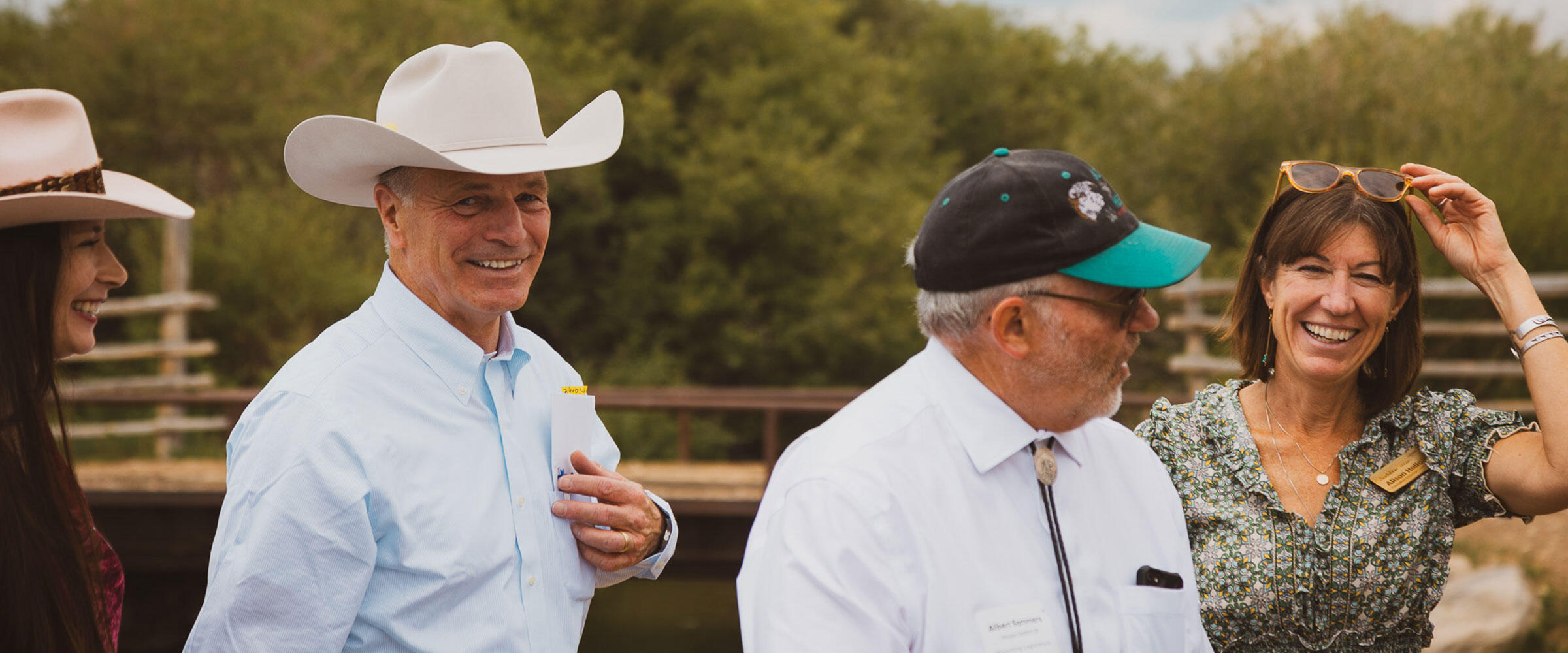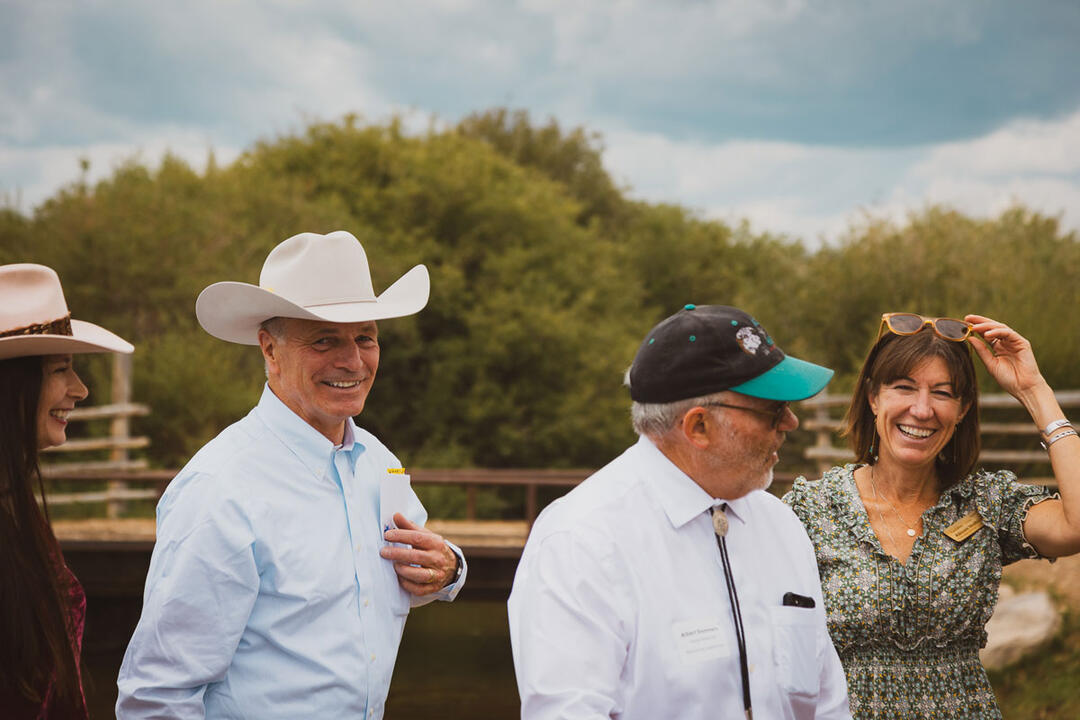This article was originally published on the National Wildlife Federation's blog.
Under a glorious bluebird Wyoming sky, a group of ranchers, state and federal land managers, wildlife advocates, Indigenous leaders, and industry representatives recently met on a ranch outside Big Piney to celebrate the work they and others have undertaken to conserve and restore the sagebrush steppe.
This ecosystem is home to more than 350 species and has helped define the rugged Western way of life. But in recent years, sagebrush country has been threatened by drought, wildfires, development, and invasive species. It has led to a precipitous decline in wildlife—especially the ecosystem’s most famous resident, the Greater Sage-Grouse.
For decades, Wyoming leaders have been working hard to determine the right way to balance conservation needs so that sage-grouse populations can recover without disrupting the economic drivers of rural communities. The June 21st event, organized by Audubon Rockies, Wyoming Wildlife Federation, and the National Wildlife Federation, was designed to celebrate those efforts and advocate for the work to continue.
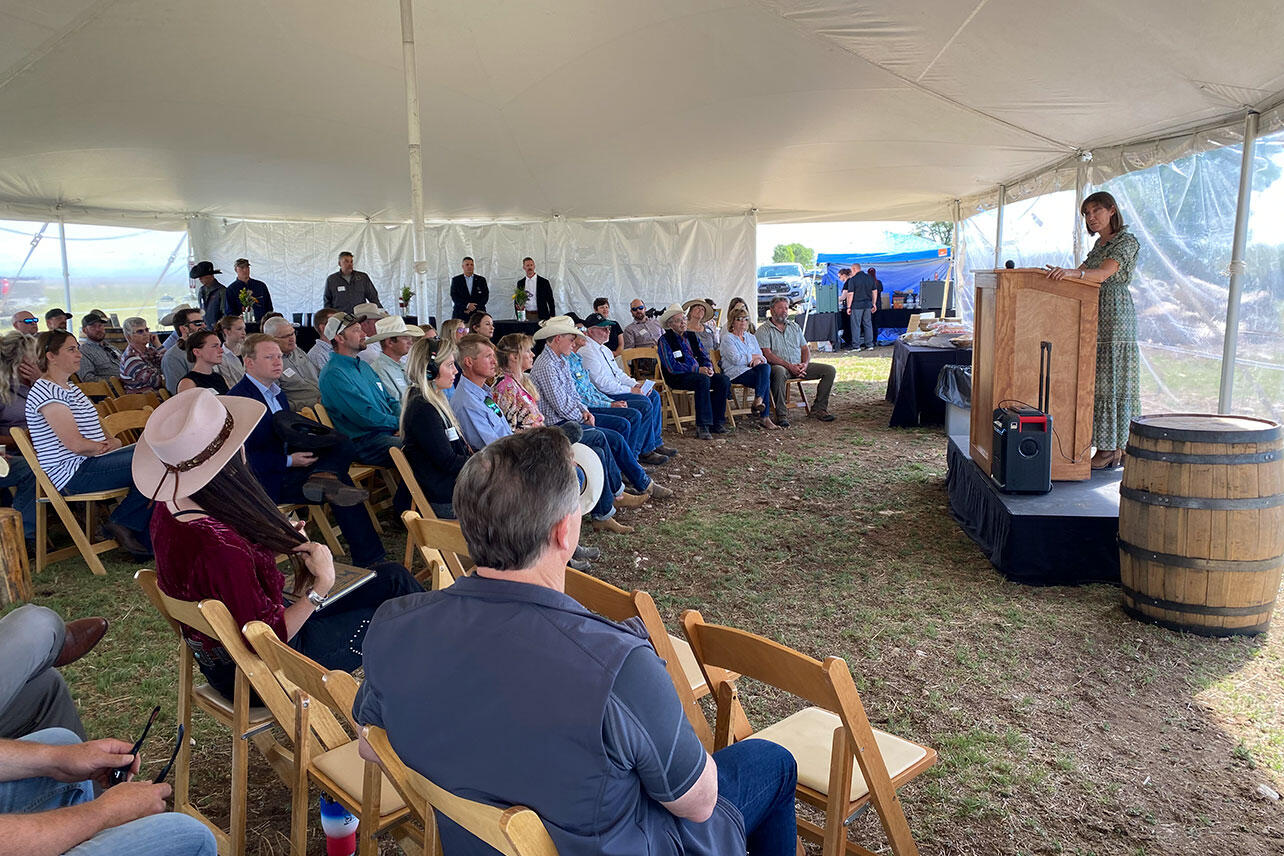
Collaboration Brings Real Change
Alison Holloran, executive director of Audubon Rockies, set the tone for the day by talking about how collaboration is necessary to make real conservation gains. “That’s what today is all about: patting each other on the back. Saying thank you. And saying ‘together, this is how we move forward.’”
It was a theme that was repeated by nearly every speaker, including livestock producer and Wyoming Stock Growers Executive Vice President Jim Magagna, who said that whether you’re a private landowner, livestock producer, agency manager, or wildlife advocate, if the work is centered on the resource, “we can find common ground. Are there challenges? Certainly there are. But we have to get beyond that to make it all work.”
Magagna said he felt the best way to see real results was by incentivizing ranchers and land managers—not by regulating them. “We often delay the process if we’re focused on regulating.”
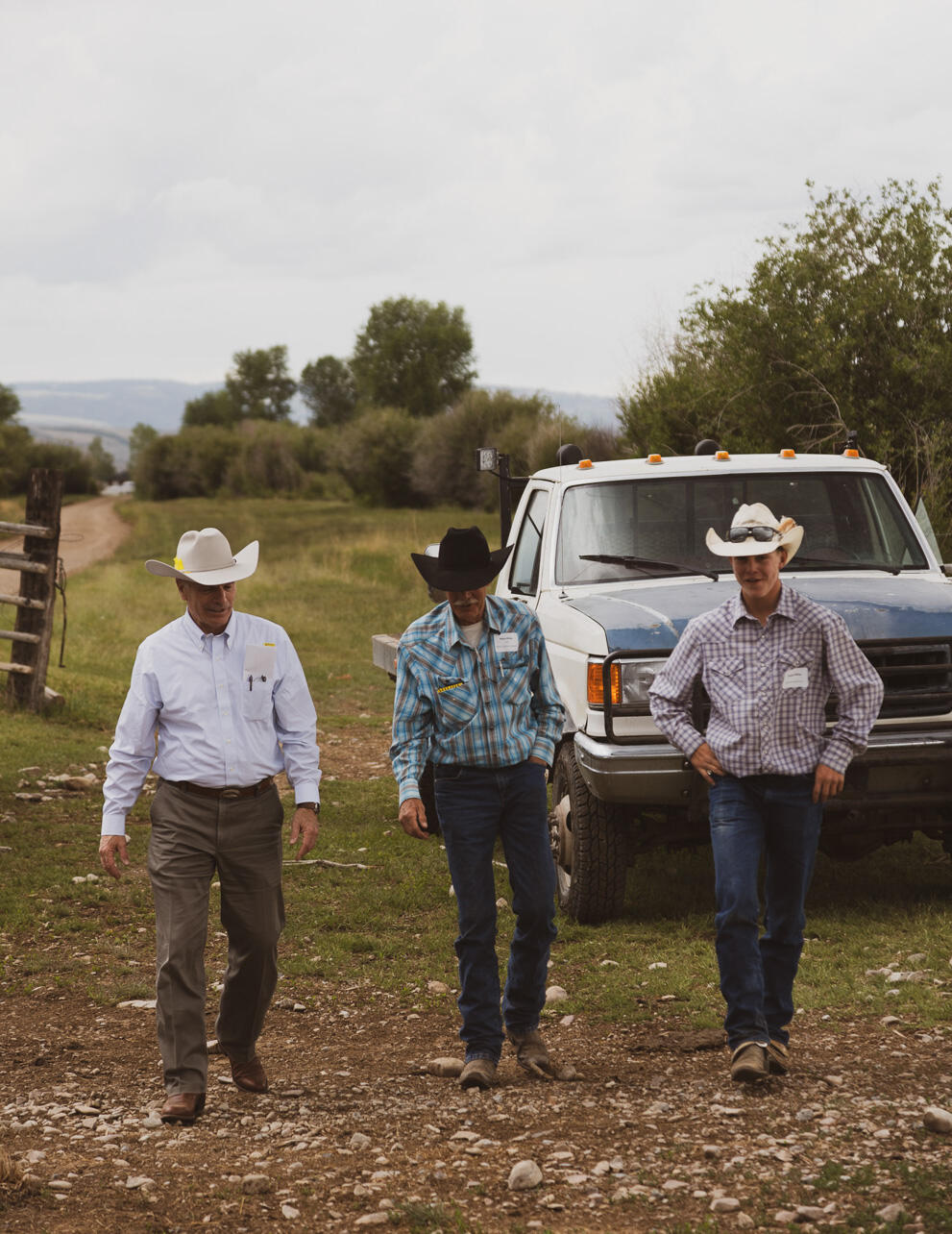
Private Landowners are Key Partners in Conservation
The event was hosted by ranchers Mike and Tara Miller, who exemplify the kind of wildlife conservation work that private landowners can engage in. They have installed wildlife-friendly fencing and use strategic grazing rotations of their cattle on public lands, among other practices.
The ranch was recently designated as Audubon Certified for exemplary conservation work that has benefited many species, including Burrowing Owl, hawks, Lark Bunting, and Sagebrush Sparrow. Tara acknowledged the help they received from both state and federal agencies, calling it “a godsend.”
Governor Mark Gordon praised the work that the Millers have done, saying “It’s only when people come together—like we are here, with leadership from folks like Mike and Tara—that we can get it solved on the ground in a way that makes sense to wildlife.”
Gordon also acknowledged the leaders in Wyoming for working together over the past 14 years to prevent Greater Sage-Grouse from being listed as an endangered species. “Wyoming got together and worked hard with agencies and groups—like the Wildlife Federation—to address the issue with data, with information, with engagement from people who were committed to making sure the bird was not harmed by regulation or management.”
His remarks were made as the Bureau of Land Management is finalizing a revised sage-grouse resource management plan. The final plan is expected to be released by the end of the year.
While the state of Wyoming has sometimes objected to proposed federal land management policies, there is one federal initiative that has widespread support and that was the focus of remarks by Jackie Bynum, the Wyoming State Conservationist with the Natural Resources Conservation Service, a division of the U.S. Agriculture Department.
She gave a shout-out to the big game migration pilot program that was started in 2022 as a collaboration between Governor Gordon and the USDA. “It was so successful that in just two years, we’ve graduated from a pilot and expanded into Montana and Idaho.” The program incentivizes private landowners to safeguard big game migration corridors so that wildlife can move more freely across landscapes.
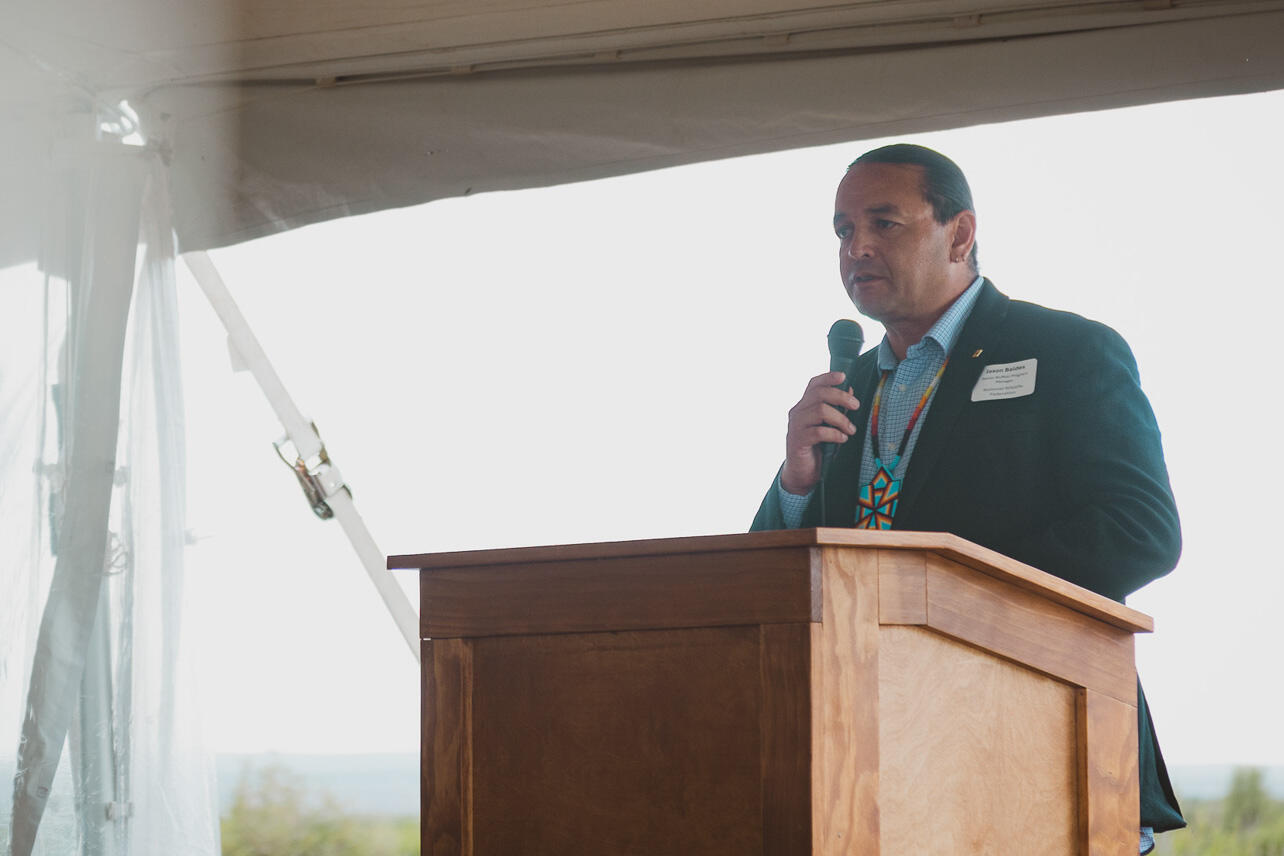
Tribes Play a Vital Role in Habitat Conservation
Jason Baldes, who heads up the Wind River Buffalo Initiative, reminded participants at the sagebrush celebration that Tribes also have an important role to play in habitat conservation and restoration. “The Tribes have always worked to protect land, water, and wildlife for millennia.” He pointed out that Indigenous people have long considered the sagebrush ecosystem as “our pharmacy, our grocery stores.”
His specific work focuses on restoring buffalo to Tribal lands and he has successfully helped restore over 100 buffalo to Eastern Shoshone and Northern Arapaho lands since 2016. He pointed out that buffalo have a symbiotic relationship with the land and wildlife. “They are beneficial to the land, from their wallowing, which creates depressions in the landscape that are important for water accumulation and seed dispersal.” He says species such as bids, prairie dogs, and burrowing owls use the hair that buffalo shed in the spring to warm their nests and burrows.
After the event ended, Governor Gordon met with reporters and said he hoped the message that people took away from the speeches was that “when you let people in Wyoming really try to solve problems, we can do it… When you see people dedicated and working together, we can accomplish great things.”

